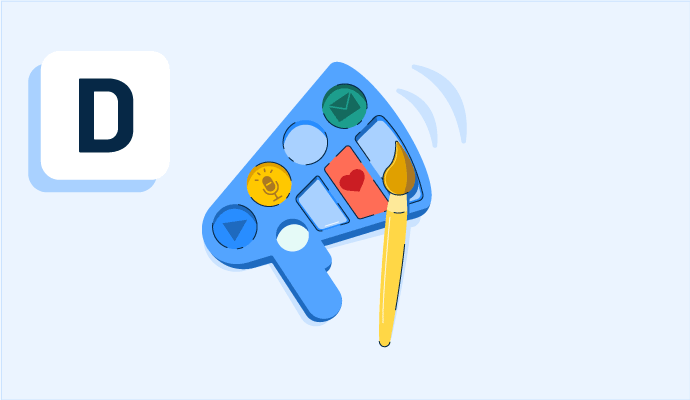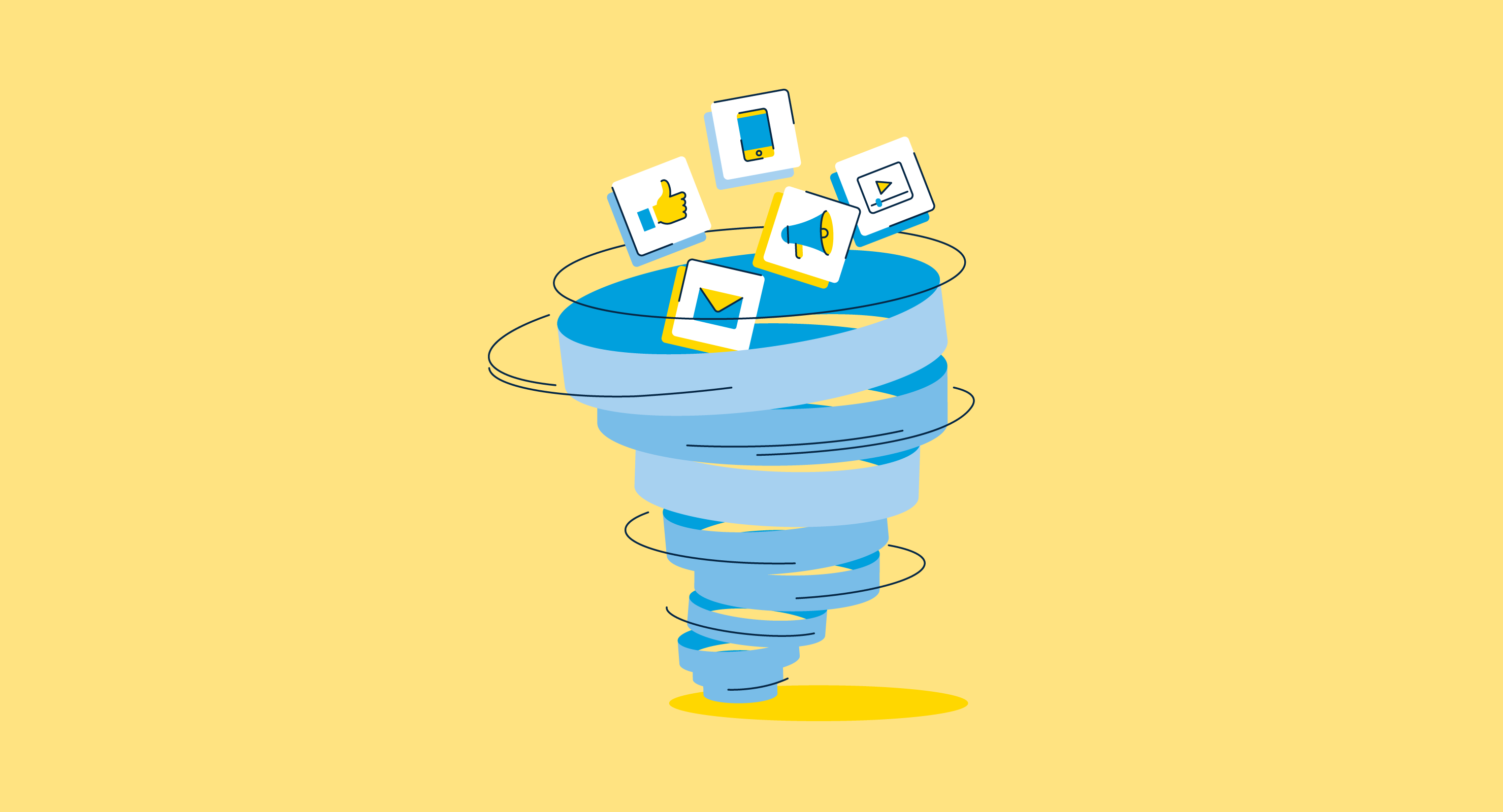What is digital marketing?
Digital marketing, sometimes called online marketing, encompasses marketing efforts that take place online. Businesses use digital channels, like social media, email, and search engines, to connect, engage, and learn from their customers. It’s a mix of paid efforts, such as digital ads and social media campaigns, and organic efforts, like videos and podcasts.
If a brand runs a marketing campaign with a digital communication element, it qualifies as digital marketing.
The strategy of digital marketing is defined by the digital approaches and channels a business uses to connect with these customers where they spend most of their time: online. Companies often turn to digital marketing services to achieve their digital goals.
Types of digital marketing
Brands have their choice of many common digital marketing channels, tactics, and strategies. Here’s an explanation of the most widely used amongst brands in varying industries.
- Search engine optimization (SEO): SEO is the process of getting a website to rank higher than other similar sites in the search engine results pages. Channels that benefit from SEO are blogs, websites, and infographics. Marketers use SEO software to research keywords and phrases that consumers search for online and then use these terms in various forms of content. This is technically a digital marketing tool, rather than a form of marketing itself. Digital marketers need to consider elements like the quality of the content, mobile friendliness, and the number of inbound links.
- Pay per click (PPC): This is a method of driving traffic to a website by paying a publisher every time a user clicks on an ad. In addition to placing ads on Google or Bing, marketers can also place paid ads on specific social media sites, like Facebook or Twitter. It’s common for brands to use PPC services for this strategy.
- Search engine marketing (SEM): Search engine marketing software can help boost web traffic by placing paid ads on search engines.These ads are placed on the top of search engine results pages for maximum visibility.
- Social media marketing: The practice of social media marketing uses social media channels to promote the brand, increase brand awareness, drive traffic, and generate new leads. This can be done on social network platforms like Facebook, Twitter, Instagram, LinkedIn, and TikTok. For these efforts to be successful, the strategy needs to be consistent, coordinated, and more thorough than just responding to comments.
- Content marketing: From blog posts to whitepapers to infographics, content marketing encompasses creating and promoting certain content assets to increase traffic, generate leads, augment brand awareness, or attract new customers. The goal is to create content that tells a story or shares information while connecting with an audience.
- Affiliate marketing: This is a performance-based advertising method in which a brand receives a commission for promoting another brand’s product or service on its website. Affiliate marketing is similar to influencer marketing as it creates a brand partnership.
- Email marketing: Brands across industries conduct email marketing to communicate with customers through their inboxes. Email marketing software can simplify how marketers promote content through newsletters, send customer welcome emails, distribute promotional materials, and follow up after a download or sign-up.
- Instant message marketing: When businesses want to contact leads or prospects fast, but there isn’t a phone number or email address to use, instant messaging comes in handy. It’s a quick and straightforward way to communicate upcoming deals, new product information, and order information. This method is also convenient for customers since it makes connecting with a customer service rep easy.
- Native advertising: This type of digital marketing refers to content-led ads that are featured on a website along with other, non-paid content. A real-life example of native advertising is when Buzzfeed has a sponsored post in the form of an article on their website.
- Marketing automation: Marketing automation software helps to automate a variety of marketing tasks, including digital marketing. Marketing automation can benefit you by optimizing tasks like sending email newsletters, posting on social media, tracking campaigns, and generating leads.
- Online PR: This type of digital marketing happens when online coverage is secured through digital publications and content-based websites. It’s like traditional PR – but in an online space. It’s usually done by conducting outreach to reports on social networks and obtaining online reviews and blog comments.
- Sponsored content: This refers to when a brand pays another company to create and promote content that also mentions their brand or service in a positive way. A popular type of sponsored content (sometimes called Spon Con) is influencer marketing, when a brand sponsors an influencer in its industry to create and publish posts or videos related to the company on its social profile.
Stages of digital marketing
The type of digital marketing a brand utilizes often depends on the different stages of the buyer’s journey. These stages are:
- Awareness stage. When a customer is here, digital marketing efforts should include creating blog posts, infographics, and short videos.
- Consideration stage. At this point, marketers should focus on creating ebooks, webinars, and research reports for their leads.
- Decision stage: Digital marketing efforts should focus on case studies and testimonials when a customer reaches this point.
Benefits of digital marketing
When done correctly, digital marketing can lead to several benefits. For example, digital marketing:
- Makes creating awareness and engagement easier before, after, and during a sale.
- Presents broad ways to get to know and connect with a larger audience.
- Helps brands convert new buyers into active customers.
- Shortens the buyer’s journey by presenting the right content at the right time.
- Can be cost-effective, especially when compared to traditional marketing methods.
- Measures and tracks efforts by viewing all metrics, like shares, clicks, views, and time on page.
- Is easy to adapt and change if strategies prove to be unsuccessful.
Digital marketing best practices
As brands create their digital marketing strategy, several steps and best practices should be considered.
- Define goals: It’s impossible to create a winning digital marketing strategy without clear goals and objectives. Whether the goal is to boost brand awareness, increase website traffic, or generate sales, aligning on goals gets everyone on the same page.
- Identify a target audience: Digital marketing lets a brand home in on a specific audience. This audience may depend on previously detailed goals
- Set a budget: How much budget is allocated toward a digital marketing strategy depends on the elements or channels within the strategy. For example, the budget can be relatively low if efforts are strictly focused on social media. The funding will likely be higher if the strategy includes purchasing online advertisements.
- Establish a free and paid digital strategy: To be as effective and successful as possible, a digital strategy should have both options. Utilizing free elements, like content and social media efforts, with paid elements, like advertising, can give brands the best of each world.
- Create engaging content: Whether it’s blog posts, social media interactions, email newsletters, PPC ads, or sponsored content, brands have to create engaging, unique, educational, and valuable material.
- Do keyword research: As brands create content, keyword research is essential in ensuring their target audience finds the business and its products using search engines.
- Optimize for mobile: With so many customers using a mobile device, taking advantage of web pages, images, and ads for a smaller, mobile screen is a must. Brands can also consider creating a mobile app to take digital marketing one step further.
- Consider analytics: Knowing how to assess and make changes based on analytics is key for making a successful, long-term marketing strategy. This data can pinpoint what’s working, what isn’t, and what needs to be updated.
Traditional marketing vs. digital marketing vs. inbound marketing
It’s common for marketers to be unsure of the differences between traditional, digital, and inbound marketing.
Traditional marketing uses traditional media that doesn’t need the internet, like newspaper and magazine ads, mailed promotions, and TV commercials, to promote a product, service, or brand.
Digital marketing describes the online marketing tactics used to engage and attract customers. It’s a collection of standalone tactics used together to reach users. It can be considered a “catch-all” for any marketing tactic within the digital medium. This includes email marketing, content marketing, and pay-per-click advertising.
Inbound marketing uses digital marketing assets to engage and attract customers. It’s a cohesive and long-term marketing methodology that is customer-driven, presenting valuable content and information to the audience.
Thinking of using email marketing as part of your digital marketing approach? Check out the best email marketing software to use in this strategy.

Mara Calvello
Mara Calvello is a Content and Communications Manager at G2. She received her Bachelor of Arts degree from Elmhurst College (now Elmhurst University). Mara writes customer marketing content, while also focusing on social media and communications for G2. She previously wrote content to support our G2 Tea newsletter, as well as categories on artificial intelligence, natural language understanding (NLU), AI code generation, synthetic data, and more. In her spare time, she's out exploring with her rescue dog Zeke or enjoying a good book.





















